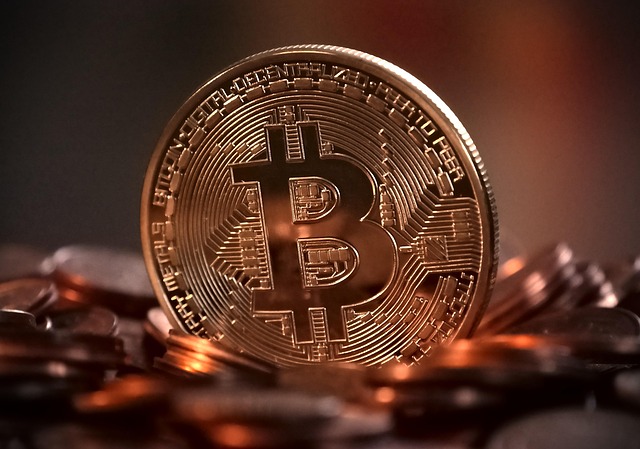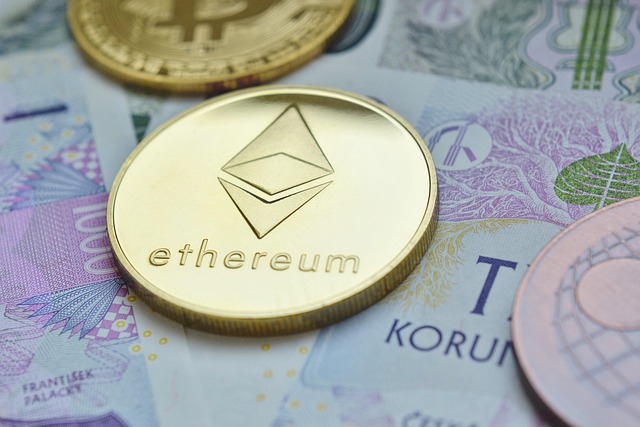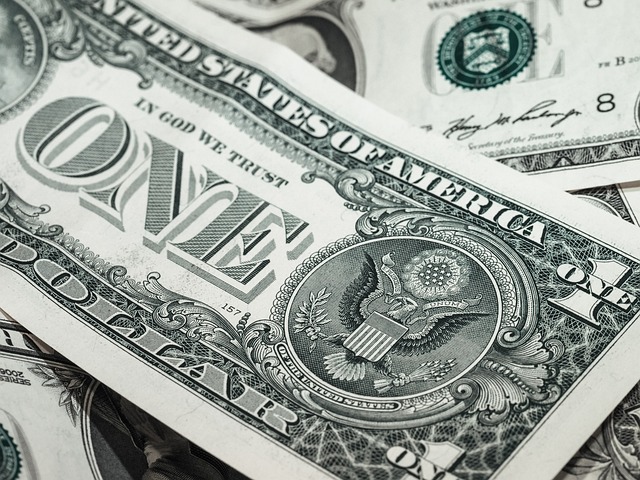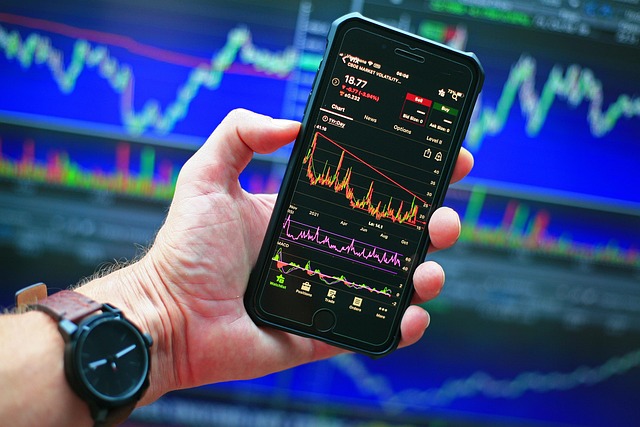Crypto in a bear market, rebound likely in Q3 — Coinbase
A monthly market review by publicly traded US-based crypto exchange Coinbase shows that while the crypto market has contracted, it appears to be gearing up for a better quarter.According to Coinbase’s April 15 monthly outlook for institutional investors, the altcoin market cap shrank by 41% from its December 2024 highs of $1.6 trillion to $950 billion by mid-April. BTC Tools data shows that this metric touched a low of $906.9 billion on April 9 and stood at $976.9 billion at the time of writing. Venture capital funding to crypto projects has reportedly decreased by 50%–60% from 2021–22. In the report, Coinbase’s global head of research, David Duong, highlighted that a new crypto winter may be upon us.“Several converging signals may be pointing to the start of a new ‘crypto winter’ as some extreme negative sentiment has set in due to the onset of global tariffs and the potential for further escalations,” he said.Related: How trade wars impact stocks and cryptoMacroeconomic woes cause crypto turmoilThe report notes that lower venture capitalist interest “significantly limits the onboarding of new capital into the ecosystem,” which is felt primarily in the altcoin sector. The cause of that, according to Duong, is the current macroeconomic environment:“All of these structural pressures stem from the uncertainty of the broader macro environment, where traditional risk assets have faced sustained headwinds from fiscal tightening and tariff policies, contributing to the paralysis in investment decision making.“According to Coinbase researchers, those facts have resulted in “a difficult cyclical outlook for the digital asset space,” and warrant continued caution in the next four to six weeks. Still, the report’s author said that the market is likely to change directions explosively:“When the sentiment finally resets, it’s likely to happen rather quickly and we remain constructive for the second half of 2025.“Duong cited some metrics to indicate when the crypto market is moving between bull and bear market phases, including risk-adjusted performance and the 200-day moving average.Another metric was the Bitcoin (BTC) Z-score, which compares market value and realized value to identify overbought and oversold conditions. A Z-score shows how unusual current price performance is when compared to historic data.Bitcoin’s risk-adjusted performance. Source: CoinbaseThis metric “naturally accounts for crypto’s larger volatility,” but it is also slow to react. This metric tends to generate few signals in stable markets. Coinbase’s model, based on it, determined that the bull market ended in late February but has since deemed the market neutral.Coinbase’s Z-score Bitcoin model. Source: CoinbaseInstead, Coinbase’s analyst suggested that the 200-day moving average is a better indicator for determining market trends. It smooths out short-term noise while being relevant by considering the last 200 days’ worth of market data.Coinbase’s 200-day moving average Bitcoin model. Source: CoinbaseThe report also said that gauging the broader crypto market’s trend by the direction in which Bitcoin is moving is increasingly less reliable. This is because crypto expands into new sectors with decentralized finance (DeFi), decentralized physical infrastructure networks (DePIN), artificial intelligence agents, and more, all with particular market forces independent of Bitcoin.Related: Bitcoin’s wide price range to continue, no longer a ’long only’ bet — AnalystAre we in a bear market?Duong points out that the 200-day moving average suggests that Bitcoin’s recent decline moved it into bear market territory in late March. Still, applying the same model to the Coin50 Coinbase index based on the top 50 crypto assets shows a bear market since the end of February.Coinbase’s 200-day moving average model applied to the Coin50 index. Source: CoinbaseRecent reports indicated that Bitcoin is showing growing resilience to macroeconomic headwinds compared with traditional financial markets. “Bitcoin’s decline was comparatively modest, revisiting price levels from around the US election period, “according to Wintermute.Duong sees Bitcoin becoming less of a generalized crypto indicator as a consequence of this trend. He wrote:“As Bitcoin’s role as a ‘store of value’ continues to grow, we think a holistic evaluation of crypto’s aggregate market activity will be needed to better define bull and bear markets for the asset class.“Magazine: Bitcoin eyes $100K by June, Shaq to settle NFT lawsuit, and more: Hodler’s Digest, April 6 – 12
Bitcoin could hit $1M if US buys 1M BTC — Bitcoin Policy Institute
A Bitcoin Policy Institute (BPI) executive floated a $1 million Bitcoin price scenario if the United States were to buy 1 million BTC. In a Bitcoin Magazine podcast, Zach Shapiro, the head of policy for the Bitcoin-focused BPI think tank, said that a 1 million Bitcoin (BTC) purchase by the US would have a massive impact on the price of the asset. “If the United States announces that we are buying a million Bitcoin, that’s just a global seismic shock. […] I think first, Bitcoin price goes through the roof,” Shapiro said. “I think we’d probably go very quickly to something like a million dollars per Bitcoin.” The discussion followed US President Donald Trump’s March 7 executive order establishing a Strategic Bitcoin Reserve and a Digital Asset Stockpile.A “Bitcoin superpower” should hold more Bitcoin BPI executive director Matthew Pines said that other nations are watching how the US positions itself with Bitcoin before formulating their own strategies.The executive added that holding more Bitcoin aligns with Trump’s promise to make the US a Bitcoin superpower. “If Donald Trump wants to make good on his promise to be a Bitcoin superpower, that ultimately comes down to how much Bitcoin you have. This is a measure of how much the United States is making good on that rhetorical objective,” Pines said. Trump’s executive order also directs the Treasury and Commerce secretaries to develop “budget-neutral” strategies for acquiring more Bitcoin to expand the reserve without additional taxpayer burden.On March 12, Senator Cynthia Lummis reintroduced the Boosting Innovation, Technology, and Competitiveness through Optimized Investment Nationwide (BITCOIN) Act to push US holdings above 1 million BTC. Related: Semler Scientific reports $42M paper loss on Bitcoin, floats $500M stock saleTariff earnings a “budget-neutral” strategy for buying BitcoinPines also suggested ways to acquire Bitcoin in a budget-neutral fashion. He floated the idea of using tariff revenues to buy Bitcoin and other potential ways for the US government to purchase more BTC. “Revenues that the government can use to acquire more Bitcoin would be things like tariff revenue or other fees that the government collects that are not tax-based fees,” Pines said. This could include royalties from oil and gas leases, sales of federal land, physical gold and other digital assets.On April 2, Trump imposed a 10% baseline tariff on all imports from all countries through an executive order. The president’s order also included reciprocal tariffs for countries that charge tariffs on US imports. However, the administration’s evolving tariff policy has created ongoing market uncertainty.Magazine: Riskiest, most ‘addictive’ crypto game of 2025, PIXEL goes multi-game: Web3 Gamer
Ethereum L2 development is ‘double-edged sword’ for ETH value
Ethereum’s push toward layer-2 (L2) blockchain scalability may be a double-edged sword for Ether, potentially weakening the value accrual of the world’s second-largest cryptocurrency, according to a new report from Binance Research.The report suggests that Ethereum’s L2 blockchain networks — built to improve mainnet scalability and lower transaction costs — may be cannibalistic of the Ethereum base layer, negatively impacting the price of Ether (ETH).Ethereum’s dominance in terms of decentralized exchange (DEX) volume and fees generated is “under threat” by Solana and BNB Smart Chain, Binance Research wrote.Ethereum, Solana, BNB, DEX volume. Source: Binance ResearchThe main factors include slow and expensive transactions, fragmented “developer mindshare and liquidity, and reduced value accrual to the L1 due to the rise of L2s,” the report said. Ethereum’s roadmap already includes future upgrades aimed at creating cheaper transactions, additional security, and more future-proof incentives for the mainnet.Still, Ether’s value accrual may continue to suffer in the near term since the next two major upgrades don’t immediately address these issues, but are aimed at creating more scalability around data availability and incorporating more L2 networks. Related: Google to enforce MiCA rules for crypto ads in Europe starting April 23Concerns have been reignited around the Ethereum mainnet’s economic incentives since Ether’s price fell to $1,410 on April 7, marking its lowest level since March 2023.ETH/USD, 1-year chart. Source: CointelegraphEther’s price fell over 61% during a four-month downtrend, which started on Dec. 16, 2024, when ETH briefly peaked above $4,100, Cointelegraph Markets Pro data shows.Ethereum’s Pectra, Fusaka upgrade won’t address Ether’s value accrualAfter initial delays, Ethereum’s highly anticipated Pectra upgrade is set to go live on the mainnet on May 7.The Pectra upgrade aims to improve Ether staking and L2 network scalability, increase blob capacity to enable more data handling on the mainnet and improve overall network capacity.The Fusaka upgrade, expected in late 2025, will focus on scaling the Ethereum mainnet as a data availability layer by introducing EIP-7594. Fusaka may also bring an update to the Ethereum Virtual Machine (EVM), resulting in a “more structured approach” to smart-contract creation, reducing runtime overhead and improving developer experience.Ethereum data capacity upgrades. Source: Binance ResearchEthereum’s commitment to L2 scaling may be a “double-edged sword” due to concerns around the mainnet’s “competitiveness as a data availability layer” and “the sustainability of value accrual to Ethereum the asset,” the report said.Related: Ethereum shorter gains $1.1M on 50X leverage in 2 days“One promising path for stronger ETH value accrual is the development of based rollups,” which “contribute significantly more in fees” to Ethereum compared with L2s like Base, Arbitrum and Optimism, according to a Binance Research spokesperson.L2s, rollups by costs paid to Ethereum mainnet. Source: Binance Research“Another avenue is Ethereum’s evolving role as a data availability layer,” the spokesperson told Cointelegraph, adding:“Value accrual through this model depends on external factors: L2s must continue to choose Ethereum for data availability, and blockspace demand must grow in a competitive landscape where alternatives like Solana and BNB Smart Chain are gaining traction.”“Aligning incentive structures between Ethereum and L2s, whether through fee sharing, MEV capture, or protocol-level integrations, will be essential to ensure sustainable value flow back to ETH as an asset should Ethereum continue to commit to scaling with L2s,” he added.Magazine: 3 reasons Ethereum could turn a corner: Kain Warwick, X Hall of Flame
OKX reenters US market following $505M DOJ settlement
Seychelles-based cryptocurrency exchange OKX announced that it is reentering the US market.According to an April 16 blog post, OKX will return to the United States market along with the appointment of former Barclays director Roshan Robert as its US CEO. Robert said in the post:“Today, I’m thrilled to announce the launch of OKX’s centralized crypto exchange and OKX Wallet in the United States, alongside the establishment of our regional headquarters in San Jose, California.“All existing Okcoin users will be migrated to the new platform, which Robert said will lead to a better overall experience. The promised improvements include deeper liquidity, lower fees and advanced trading tools.Source: OKXRelated: Standard Chartered and OKX pilot crypto, tokenized fund collateralsStep by stepOKX will not roll out the upgrade in one shot. Instead, the new platform will take a phased approach to onboard new customers. The exchange plans to follow the cautious approach with a nationwide launch later in 2025.“We’re beginning with a phased rollout for new customers to ensure a smooth and secure onboarding process, with a broader nationwide launch planned later this year,“ Robert said.OKX also promised integrations with local banks and support for major assets, including Bitcoin (BTC), Ether (ETH), USDt (USDT) and USDC (USDC). Robert noted that the company maintains a global proof of reserves for all its assets, which is published monthly by cybersecurity firm Hacken.Hacken had not responded to Cointelegraph’s request for comment by publication time.In addition to its trading platform, the firm is also rolling out OKX Wallet to its US-based customers. The wallet supports 130 blockchains and features a decentralized exchange (DEX) aggregator, allowing access to over 10 million tokens on platforms including Ethereum, Solana and Base.Related: Malta regulator fines OKX crypto exchange $1.2M for past AML breachesOKX gets out of US troublesThe report follows OKX hiring former New York Governor Andrew Cuomo to advise it over a federal probe that resulted in the firm pleading guilty to several violations and agreeing to pay $505 million in fines and penalties.The exchange admitted on Feb. 24 to operating an unlicensed money-transmitting business in violation of US Anti-Money Laundering laws. As a consequence, OKX agreed to pay $84 million worth of penalties while forfeiting $421 million worth of fees earned from primarily institutional clients.After the investigation concluded, OKX said it would seek out a compliance consultant to remedy the problems revealed by the federal probe and improve its compliance efforts. OKX’s CEO Star Xu wrote in a Feb. 24 X post:“Our vision is to make OKX the gold standard of global compliance at scale across different markets and their respective regulatory bodies.”OKX had not responded to Cointelegraph’s request for comment by publication timeMagazine: XRP win leaves Ripple and industry with no crypto legal precedent set
Italy finance minister warns US stablecoins pose bigger threat than tariffs
Italy’s minister of economy and finance warned that US stablecoin policies are more concerning than President Donald Trump’s tariffs, citing the potential for these crypto assets to undermine the euro’s dominance in cross-border payments.Speaking at an event in Milan, Giancarlo Giorgetti said that while trade tariffs dominate headlines, new US policies on dollar-backed stablecoins present an “even more dangerous” threat to European financial stability, according to a Reuters report.US stablecoins allow users to invest in a widely accepted method for cross-border payments without opening a US bank account, Giorgetti said. He warned that the growing appeal of US stablecoins to Europeans should not be underestimated. Giorgetti urged European Union lawmakers to take more steps to boost the euro’s position as an international currency. He added that the digital euro under development by the European Central Bank (ECB) will be essential to minimize the need for Europeans to resort to foreign solutions. US lawmakers advance stablecoin billsPresently, stablecoin regulation in the US remains fragmented. Instead of a unified framework, multiple agencies apply existing laws to regulate stablecoins. However, lawmakers are working to implement changes, with several pieces of stablecoin legislation progressing. On April 2, the US House Financial Services Committee passed the Stablecoin Transparency and Accountability for a Better Ledger Economy (STABLE) Act. The bill is now headed to the House floor for a full vote. The bill was introduced on Feb. 6 by Committee Chair French Hill and the Digital Assets Subcommittee Chair Bryan Steil. It would ensure that stablecoin issuers provide information on their businesses, including how their tokens are backed. In addition, the Guiding and Establishing National Innovation for US Stablecoins (GENIUS) Act establishes rules that require issuers to maintain reserves backed one-to-one, comply with Anti-Money Laundering (AML) laws, protect consumers and boost dollar dominance in the global economy. The GENIUS Act still requires approval by both chambers of Congress and a presidential signature before becoming law.Related: Stablecoins are the best way to ensure US dollar dominance — Web3 CEOECB exec renews digital euro pushApart from Giorgetti, ECB Executive Board member Piero Cipollone also urged European lawmakers to intensify their efforts to combat dollar-backed stablecoin dominance in Europe. On April 8, Cipollone wrote an article expressing concerns about the growing popularity of US stablecoins. The official suggested launching a central bank digital currency to combat this threat to the euro. He said this would aid in preserving the monetary sovereignty of the eurozone. Magazine: Memecoin degeneracy is funding groundbreaking anti-aging research
Sony’s Soneium taps EigenLayer to cut finality to under 10 seconds
Soneium, a layer-2 (L2) blockchain network developed by Sony Block Solutions Labs, said it has slashed its blockchain finality time by over 98%, as it aims to solve one of the biggest challenges in blockchain scalability.Astar, a Japanese Web3 adoption collective bridging Astar Network and Soneium, announced a strategic partnership with AltLayer and EigenLayer to launch a “Fast Finality Layer” for Sony’s L2 blockchain.In blockchain settlement, finality is the assurance that a transaction is irreversible, which happens after it is added to a block on the blockchain ledger.The new finality layer provides a crypto-economic security guarantee through a decentralized network of validators to reduce the reliance on centralized sequencers and enable more secure crosschain interactions.Soneium, ALtLayer, EigenLayer partnership. Source: Astar NetworkThis could result in a sub-10-second transaction finality for Soneium, a 98% reduction from its initial 15-minute finality, which was achieved through Optimism’s OP Stack, according to an announcement shared with Cointelegraph.The new validator network will be secured by both restaked Ether (ETH) and Astar (ASTR) tokens.Reducing blockchain finality is key for enabling more advanced decentralized finance (DeFi) use cases and improving developer and user experience, since most solutions experience finality delays from 15 minutes to several days, according to Maarten Henskens, head of Astar Foundation.The new partnership is a “crucial step toward secure, high-speed, crosschain interoperability,” he told Cointelegraph, adding:“It’s a foundational improvement in UX and trust: users no longer need to wait or “double-check” if a transaction will be reversed, and developers can confidently build real-time, interactive applications without worrying about delayed finality.”“This milestone is just the beginning — and there’s a much larger story unfolding around how fast finality will reshape developer UX, DeFi, and crosschain experiences,” he added.L2s by blockchain finality time. Source: L2beat Arbitrum One is currently the fastest blockchain, with an average finality time of one minute, the same as Coinbase’s Base L2 network, both relying on optimistic rollups, L2beat data shows.Related: Crypto lending down 43% from 2021 highs, DeFi borrowing surges 959%Blockchain L2 finality a key bottleneck for adoptionSolving blockchain finality remains the biggest barrier to mainstream Web3 adoption, according to YQ Jia, CEO of AltLayer.“By combining EigenLayer’s restaking with MACH validation and support from Astar Network, we’re creating an infrastructure that offers the best of both worlds — Ethereum’s security guarantees with near-instant finality,” Jia said. “This is exactly the kind of solution needed to bring blockchain technology to mainstream adoption.”Related: Kraken rolls out ETF and stock access for US crypto tradersEigenLayer has sought to advance mainstream blockchain adoption since it launched.In February 2025, EigenLayer and blockchain protocol Cartesi launched a new initiative to find the next key prototype consumer application with new use cases that may bolster mainstream crypto adoption.Magazine: Financial nihilism in crypto is over — It’s time to dream big again
How trade wars impact stocks and crypto
The 2025 US-China trade war On April 2, 2025, President Donald Trump declared a national economic emergency and announced sweeping new import tariffs.Dubbed “Liberation Day,” the policy set a baseline 10% tariff on all foreign goods, with a massive 145% rate on products from China. The move was framed as a way to fix long-standing trade imbalances and protect national industries.China responded almost immediately. Tariffs on US imports jumped to 125%, and restrictions were introduced on the export of rare earth elements, materials essential to global manufacturing. Within days, trade between the world’s two largest economies had slowed dramatically.The markets didn’t take it well. The S&P 500 dropped 15% in under a week. The Nasdaq was down nearly 20% for the year by April 7. Investors were rattled by the scale of the escalation and the potential knock-on effects on global growth.Crypto didn’t stay quiet either. As stocks fell and uncertainty spread, Bitcoin (BTC) saw a surge in trading volumes, with many turning to digital assets as a hedge.What follows is a closer look at how these trade tensions hit financial markets, starting with traditional stocks and then crypto. Trade wars’ impact on stocks Markets don’t like surprises – and they really don’t like trade wars. When the US announced its 145% tariff on Chinese imports in April 2025, the response from Wall Street was swift and brutal. The S&P 500 tanked more than 10% in just two days. Tech stocks took it even harder, with the Nasdaq shedding nearly 20% since the start of the year.Still, if you’ve watched the markets through past trade fights, this was all pretty familiar. In 2018–19, during the first round of US-China tariff battles, every tweet about negotiations or new duties sent stocks whipsawing. And if you zoom way out, the Smoot-Hawley Tariff Act of 1930 is one of the earliest and most notorious examples as tariffs piled up, global trade shrank and the Great Depression got worse.So why do stocks get hit so hard? A few reasons. Tariffs raise the cost of imported goods, which squeezes profit margins for companies that rely on international supply chains. When a carmaker or electronics brand has to pay more for components, that cost either eats into profits or gets passed on to customers. Either way, it’s bad news for earnings, and earnings are what drive stock valuations.There’s also the fear factor. Trade wars inject a lot of uncertainty into the economy. Will more tariffs follow? Will other countries retaliate? That kind of unpredictability causes companies to delay investments and hiring, while consumers may start pulling back on spending. This shows up as increased market volatility, often tracked by the VIX, Wall Street’s so-called “fear index,” which tends to spike in times like this.Central banks sometimes try to cushion the blow by tweaking interest rates or injecting liquidity. But there’s only so much they can do when the root of the problem is political. Did you know? On April 9, 2025, Trump announced a 90-day pause on new tariffs for most countries. He explained the pause by saying people were getting “a little bit yippy,” his way of describing nervousness in the markets. When tariffs hit, crypto takes a punch, then bounces back The tariffs hit crypto, too, but the market recovered just days later, reflecting crypto’s volatile yet responsive nature during global uncertainty.After Trump’s new tariffs were announced, Bitcoin slid to around $76,000. Ethereum and other major tokens followed suit, and around $200 billion was wiped off the total crypto market cap in a few days.Again, this kind of sell-off isn’t unusual. When uncertainty spikes – like during a sudden escalation in global trade tensions – investors tend to play it safe. That means pulling out of more volatile assets, including crypto, and moving into what’s seen as safer ground, like cash or bonds. It’s a classic “risk-off” move.But as you’ve seen before, crypto doesn’t stay down for long. By mid-April, Bitcoin had bounced back and was trading at just under $85,000. Ether (ETH), XRP (XRP) and other major altcoins also recovered some ground. For many investors, this rebound was a reminder that while crypto is volatile, it’s also increasingly viewed as a valuable hedge, something outside the reach of any government or policy decision.In 2018–19, during an earlier round of US-China tensions, Bitcoin showed similar patterns: short-term drops followed by fast recoveries. And earlier in 2025, new tariffs on Canadian and Mexican imports triggered a dip that quickly reversed.Stocks, meanwhile, tend to have a tougher time recovering. As of April, the S&P 500 is down nearly 9% for 2025, and the Nasdaq is off more than 13%. There was a brief lift after the US paused some tariffs for 90 days, but overall, the mood in equity markets remains shaky. What trade wars mean for supply chains and consumers The ripple effects of the 2025 trade war are grinding through global supply chains, one industry at a time. From electronics to autos to medicine, the cost of moving goods worldwide is rising. Let’s talk about a few industries in particular. Trade wars’ impact on electronics and semiconductorsElectronics are at the heart of it. In 2024, the US imported $146 billion of electronics from China. With tariffs on those goods jumping, companies could be looking at an added $182 billion in annual costs if these rates stick around.This is also a problem for consumers. Take Apple, for example. With no lasting exemption for phones, an iPhone 16 Pro Max could climb from $1,199 to over $1,800. Add in uncertainty about future duties on laptops, chips and smart devices, and the entire sector is on edge. Trade wars’ impact on the automotive industryCarmakers are in a similar bind. The US has raised tariffs on Chinese-made vehicles from 25% to more than 100%. And it’s not just the finished cars — batteries, chips, and other parts sourced from China are also caught in the crossfire.For electric vehicle manufacturers, in particular, this is a serious hit. Chinese battery components are essential for many US and European EV brands. With supply chains suddenly tangled in red tape and higher costs, some automakers are pausing production or switching suppliers.Trade wars’ impact on pharmaceuticalsEven the healthcare system is feeling it. The US depends heavily on China for key medical supplies and pharmaceutical ingredients. With new tariffs, prices are climbing, and existing shortages are worsening.Industry experts are warning of major disruptions. Everything from common medications to hospital-grade equipment is likely to get more expensive. And in a healthcare system already under pressure, even a small bottleneck can cause big problems down the line.Did you know? European markets are already seeing signs of a spillover. Chinese exporters, locked out of the US by tariffs, are redirecting goods to Europe, especially in tech and consumer goods. Rising tariffs, shaky markets, what’s next? The big picture regarding the 2025 US-China trade war still looks hazy amid real implications for investors, business leaders and policymakers worldwide.Let’s examine the short-, medium- and long-term outlooks. Short-termThere’s been a bit of short-term relief. When the US announced exemptions on some tech products – like smartphones and laptops – from the harshest tariffs, markets breathed a sigh of relief. The S&P 500 saw an uptick, and global markets followed suit. Tech-heavy Asian indexes rallied, and European markets, including Germany’s DAX and the UK’s FTSE 100, climbed. Even US bank earnings helped push optimism a bit further.Still, it’s probably temporary. These exemptions are under review, and the bigger trade policy feels like shifting sand. Medium-termLooking ahead a bit further, the risks start to grow. If the trade conflict drags on, it could seriously slow down global growth. JPMorgan recently raised its global recession risk to 60%, and that’s no small thing. Central banks are already weighing their next moves; interest rate adjustments, coordinated actions, and contingency planning are all back on the table.Some voices, like former UK Prime Minister Gordon Brown, call for a global response similar to what we saw during the 2008 financial crisis. Meanwhile, businesses are rethinking their supply chains and scrambling to find alternatives, something that’s easier said than done.Long-term You’re seeing a pivot with nations exploring new trade deals and trying to reduce reliance on traditional powerhouses. China, for example, is pushing harder to internationalize the yuan and accelerate its Belt and Road Initiative. Conversely, the US is leaning into domestic manufacturing and trying to reduce its dependence on imports.And the consequences could be massive. The WTO has warned that trade between the US and China could shrink by as much as 80%. That’s a huge shift, considering these two countries account for about 3% of global trade. If that drop materializes, it could rattle the global economy.
Bitcoin trader sees gold 'blow-off top' as XAU nears new $3.3K record
Bitcoin (BTC) faces an uphill struggle as a safe haven in 2025 as gold fund inflows circle $80 billion.Data from Bank of America (BoA) uploaded to X by trading resource The Kobeissi Letter on April 15 confirms gold’s “best streak” since 2013.Gold beats records as Bitcoin ETFs slumpAs the US trade war sees investors flee to gold, Bitcoin has lost the limelight as a hedge against macroeconomic volatility.BoA figures show inflows to gold funds beating records, with data from Cointelegraph Markets Pro and TradingView capturing new all-time highs for XAU/USD near $3,300 per ounce on April 16.“Gold fund net inflows have hit a record $80 BILLION year-to-date. This is 2 TIMES more than the previous high set in the full year 2020,” Kobeissi noted. “Investors are pouring money into gold at a record pace as the market uncertainty has skyrocketed. As a result, gold prices have rallied 22% year-to-date and have outperformed every other major asset class.”Gold fund flows chart. Source: The Kobeissi Letter/XBTC price action, by contrast, paints a very different picture. Despite the appearance of the US spot Bitcoin exchange-traded funds (ETFs) and growing global integration, BTC/USD reached five-month lows earlier in April.Data from onchain analytics platform Glassnode calculates that the ETFs’ combined assets under management fell from $106 billion at the start of the year to $92 billion this week.“Gold prices have also hit 52 all-time highs over the last year, posting the best streak in 12 years,” Kobeissi concluded. “Gold is the global safe haven.”US spot Bitcoin ETF balances. Source: GlassnodeGold “terminal top” meets Bitcoin bullsDespite its repeated new records, however, market commentators already see gold’s unprecedented upside coming to an end.Related: Can 3-month Bitcoin RSI highs counter bearish BTC price ‘seasonality?’Addressing the topic on X this week, veteran trader Peter Brandt called a “blow-off top” on XAU/USD.“Gold has now entered its blow-off stage,” he summarized. “Such rapid advancement will come to a terminal top, but attempting to pick a high can be very expensive. Blow off tops can extend well beyond a bear’s ability to meet margin calls.”XAU/USD 1-day chart. Source: Peter Brandt/XA gold comedown may well leave room for Bitcoin to catch up, per a popular theory that says that BTC/USD copies gold trends with a delay of several months.Great chart from my Partner, David Foley.Shows how Gold moves first, Bitcoin follows harder. Scale different for each.@DAAF17 pic.twitter.com/jHMe6apewj— Lawrence Lepard (@LawrenceLepard) April 13, 2025“Nobody really knows why that happens,” Professional Capital Management founder and CEO Anthony Pompliano told CNBC on April 15.Pompliano suggested that traditional financial entities were either unauthorized or simply “not used” to the idea of Bitcoin as protection against macro uncertainty.“What we do see though is that when gold runs, about 100 days later or so, Bitcoin not only catches up; it usually runs much harder, and so you get that higher volatility,” he said.This article does not contain investment advice or recommendations. Every investment and trading move involves risk, and readers should conduct their own research when making a decision.








